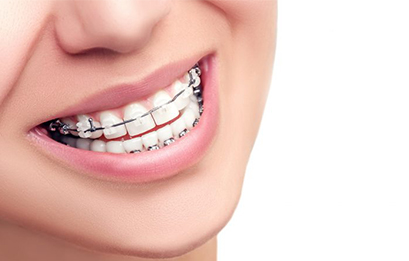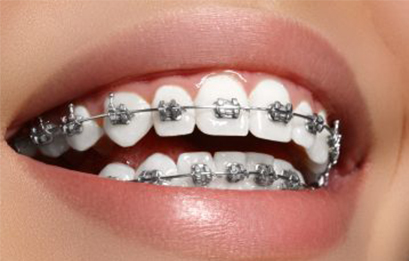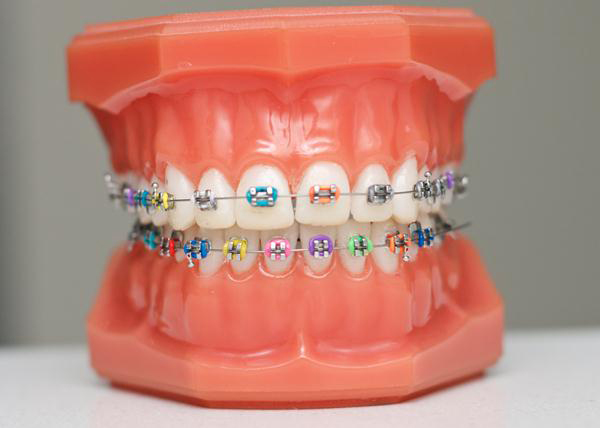Metal Braces
Metal brackets can be silver or golden. The golden brackets look a bit more “jewelry-like” and are often a popular choice for young women. Metal brackets are very strong and can withstand most types of treatment. At first, they may irritate your gums, but after a few weeks, when your cheeks get “toughened up” they are not a problem anymore. Conventional metal braces are now smaller, more efficient and comfortable in recent years following many advances in orthodontic materials such as metal wires and brackets.
Brackets on braces can now be clear to make treatment nearly invisible. The polymer-brace is translucent making it one of the most popular aesthetic choices in braces today. Clear braces are worn on the front of the teeth just like traditional steel braces. Unlike metal braces, they blend with the color of the teeth for a much less noticeable appearance. They may look better but also may break more easily than metal braces.
Invisible Braces
Invisible braces are a series of clear, customized, removable appliances called aligners. Not only are these braces invisible, but they also are removable so they won’t trap food and plaque between your teeth like metal braces. You’ll wear each aligner for about two weeks and only remove it for eating, brushing and flossing.
Lingual Braces
Lingual braces are attached to the inside or lingual side of the teeth which makes them completely non-visible. Lingual orthodontics particularly well-suited for adults whose professions keep them in the public eyes. Lingual braces can significantly enhance an individual’s appearance – without the self-confidence shakers of metal braces. Therefore, lingual braces are a great option for both adult professionals and teens who would feel more confident with invisibility—all while managing great dental health. Lingual braces can also be extremely convenient for those who play wind instruments or contact sports.
Retainers
Orthodontic retainers are custom-made devices, made usually of wires or clear plastic, that hold teeth in position after surgery or any method of closing spaces between teeth. They are most often used before or after dental braces to hold teeth in position while assisting the adjustment of the surrounding gums to the changes in bone. Most patients are required to wear their retainer(s) every night at first, with many also having to wear them during the day. They should not be worn while eating any food or while drinking staining or acidic beverages.



